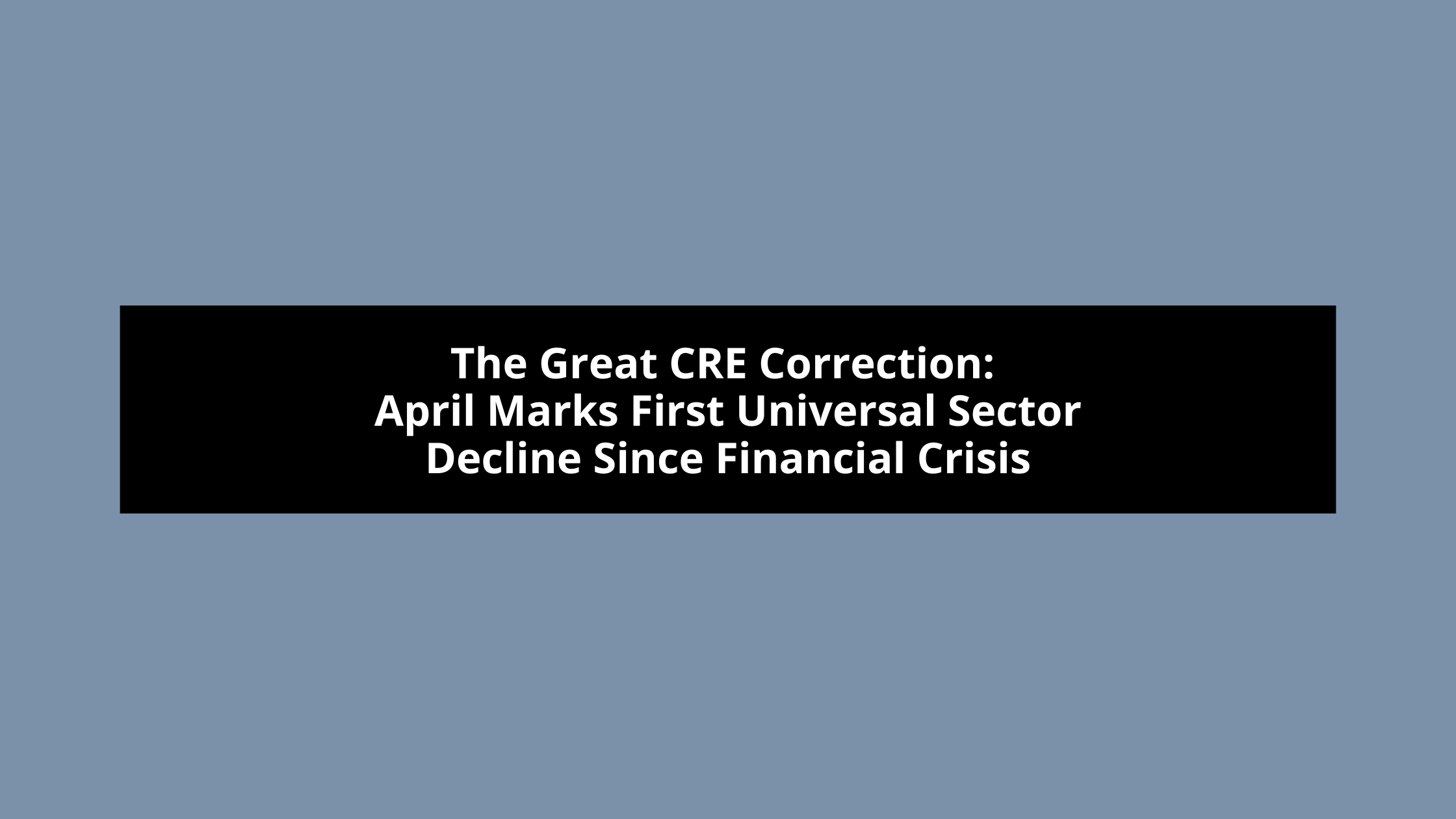CRE Distress Reaches Decade High: Office and Multifamily Sectors Face Mounting Pressure
Commercial real estate markets are experiencing significant turbulence as distressed assets hit
a remarkable milestone in the fourth quarter.
According to recent data from MSCI’s US distress tracker, the total value of distressed commercial real estate assets in the United States reached $107 billion, marking a decade high and
representing a substantial 24.3% increase from the previous year.
Office Sector Bears the Brunt
~The office sector continues to shoulder the heaviest burden, accounting for nearly half
of all distressed assets with $51.6 billion in troubled properties. This dominance in
distress reflects the ongoing challenges faced by office buildings in adapting to post-
pandemic work patterns.
~Retail properties follow with $21.4 billion in distress, while multifamily assets currently
represent $17.1 billion of the total.
~However, a noteworthy trend emerged in Q4 as multifamily properties became the
primary driver of distress growth. This shift signals potential vulnerabilities in the
residential sector, stemming from increasing vacancy rates and rent collection
challenges across various markets.
Multifamily: The Sleeping Giant
While office distress dominates current headlines, the multifamily sector might pose an even
greater challenge on the horizon.
~MSCI’s analysis reveals a staggering $108.7 billion in potential distress within the
multifamily sector, representing 34.9% of total potential distress across all asset classes.
This figure significantly overshadows the $74.7 billion in potential office sector distress.
The nature of distress differs meaningfully between these sectors. Office buildings grapple with
fundamental shifts in workplace culture and remote work adoption, leading to reduced demand
and higher vacancies. In contrast, multifamily properties face unique challenges related to
limited vacancy options for tenant relocations when landlords encounter financial difficulties.
Market Dynamics and Sales Trends
Despite the rising distress levels, distressed property sales remain relatively contained,
comprising just 2.5% of total commercial real estate transaction volume in 2024. While this
marks the highest share since 2015, it pales in comparison to the 18% recorded during the
aftermath of the Global Financial Crisis in 2010.
A silver lining emerges in the data: the rate of distress growth appears to be decelerating.
This “negative second derivative” suggests that while distress continues to mount, its pace is slowing – potentially signaling early signs of market stabilization.
Looking Ahead
As we progress through 2025, the commercial real estate market stands at a crucial juncture.
The combination of persistent office vacancies, looming multifamily challenges, and broader
economic uncertainties could sustain upward pressure on distress levels. However, the
moderating pace of distress growth might create strategic opportunities for well-positioned
investors.
Market participants should remain vigilant in monitoring these trends, as they could signal
optimal timing for acquisitions, dispositions, or hold strategies in an increasingly complex
market environment. The evolving landscape of commercial real estate distress will likely
continue to reshape investment strategies and market dynamics throughout the year.


